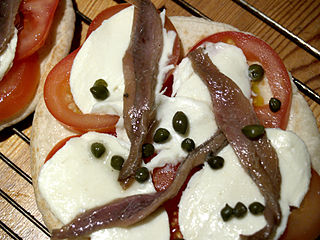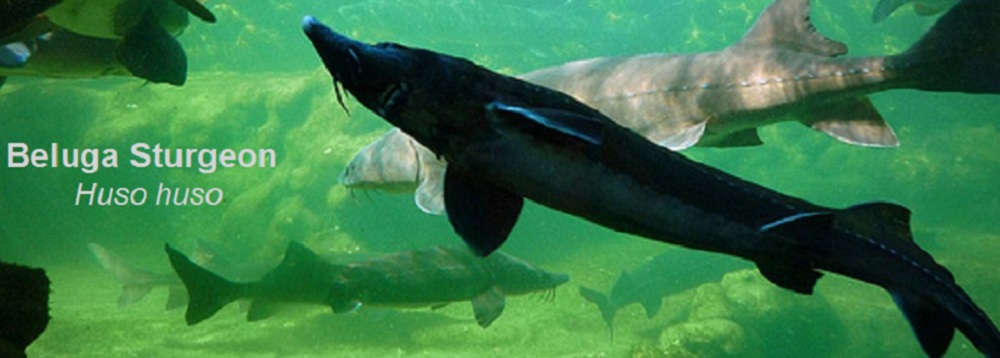Nutrition
 The nutrition habits of Huso huso appear to be
relatively simplistic, as the sturgeon will eat most anything
that can fit in the relatively large mouth that the fish
possesses. Though they will eat most anything, the preferred prey sources for the species differ depending on
their location and age. For example, the adult beluga sturgeon that inhabit
the Black Sea will feed almost exclusively on Black Sea
anchovies, flounder, gobies, haddock, mullet and pickarel, while
the adult beluga that are found in the Caspian Sea tend to consume
herring, gobies, and Caspian roach
(Berg, 1962). Now the anchovies eaten by beluga sturgeon may not
be prepared to same level as those to the right, but they seem
to have always hit the spot for the fish. The juvenile sturgeon prefer to eat smaller
invertebrates until they reach the age of maturity and are
better equipped to catch the prey preferred by adults.
(Hudson, 2003)
The nutrition habits of Huso huso appear to be
relatively simplistic, as the sturgeon will eat most anything
that can fit in the relatively large mouth that the fish
possesses. Though they will eat most anything, the preferred prey sources for the species differ depending on
their location and age. For example, the adult beluga sturgeon that inhabit
the Black Sea will feed almost exclusively on Black Sea
anchovies, flounder, gobies, haddock, mullet and pickarel, while
the adult beluga that are found in the Caspian Sea tend to consume
herring, gobies, and Caspian roach
(Berg, 1962). Now the anchovies eaten by beluga sturgeon may not
be prepared to same level as those to the right, but they seem
to have always hit the spot for the fish. The juvenile sturgeon prefer to eat smaller
invertebrates until they reach the age of maturity and are
better equipped to catch the prey preferred by adults.
(Hudson, 2003)
The constant decrease in beluga populations have led to many
studies on the eating behaviors of these fish. Several studies
suggest that these fish have chosen their prey due to the
nutrition they need to be the optimal size and fitness. High
lipid concentrations have proven to increase growth rates in
Huso huso, and it was also found that fish oil, when
compared with soybean oil, was most beneficial to these sturgeon
in captivity. (Ahmadi, 1022) Other
studies have proven that increasing the frequency that beluga
eat would not cause them to have increased growth rates, rather
the fish weren't hungry if their internal feeding schedules were
not attended to. (Mohseni, 2006)
These two studies suggest that there in the wild, beluga
sturgeon do what is best for their survival. This should not
come as much of a surprise as these fish have been in existence
for thousands of years. (Kottelat, 2011)
You would think they have figured out how to eat by now!
Click here to go back to the homepage!
